conservation

legislation
This year the Thresher Shark Research and Conservation Group made significant inroads into understanding the biology and consequently the vulnerability of these magnificent animals. As a direct consequence of our networking with government and conservation groups, the first move to legislate protection for thresher sharks in Philippine history was passed August 19, 2008 (Batangas City, Ordinance Resolution 9, series 2008). Only the second shark species to be considered for protection under Philippine law, the advent and acceptance of this ordinance (figure 1) is the first of its kind and the source of great pride for the Group.
a critical need
classification
All 3 thresher shark species are now listed as VULNERABLE by the International Union for the Conservation of Nature and Natural Resources (IUCN press release 2007).
vulnerability
Thresher sharks are among the more demanded shark species for global fisheries. They are prized for their high quality meat which is used fresh, frozen, smoked and dried-salted. Their fins are prized for shark-fin soup, their livers for vitamin extraction and their hides are used in the production of leather goods. Alopias pelagicus represents 12% of Taiwan’s shark catch with an average 3,100 units (222 MT) taken per annum. Methods employed in the hunt for thresher shark species are dominated by commercial and recreational long-line fishing practices. Their low fecundity of 2 pups per litter over long gestation periods classifies them as a K-species (Liu et al. 1999). This factor combined with their relative proclivity for habitat subjected to high intensity oceanic fisheries, raises concern over the viability of population sustainability. In 2002, Baum et al. reported that 80% of global thresher shark populations have been lost to fishing pressure over the past 15 years. The results of this study showed that if unified conservation efforts are not applied, thresher sharks are likely to be eradicated from many of their chosen habitats.
the Philippine issue
Commonly fetching ₱ 150 kg of meat and ₱ 1000 kg dried fins (£1.75 and £11.75 respectively), Thresher sharks are found in fish markets across The Philippines. Thresher sharks are known to be directly targeted for the Asian shark fin trade in Batangas Bay, Sogon, and Bohol, and are suspected to be hunted in many other regions. In March 2008, the ‘Thresher Shark Research and Conservation Group’ assessed the extent to which thresher sharks are fished out of Philippine waters as beyond the sustainability of their population thresholds.
management
Because thresher sharks follow transboundary migration routes (Hewitt 2001) and are phylogeographically isolated (Tonatuh 2004), there is a real need for regional, national and international co-operation when considering the implementation of conservation management initiatives. While real inroads toward protecting these animals have been made at the regional level within the Philippines, to date no agreement exists to protect them beyond boundaries.
solutions
Since revenues have been calculated in excess of ₱ 6,000,000 (£70,250) per annum for one daily observation of a live thresher shark by an average 3 SCUBA divers visiting Malapascua Island, the ‘Thresher Shark Research and Conservation Group’ has endeavoured to promote similar ecotourism elsewhere in the Philippines. To date, the comparative cost benefit analysis of live thresher sharks being observed by SCUBA divers versus their value dead in a fish market (₱ 8,125/£95 mean), has drawn favourable responses from conservation agencies and policy makers alike. This is an ongoing effort and is expected to consume much of our focus in the coming years.
efforts & rewards
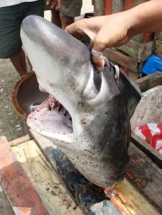
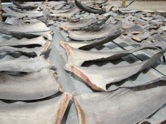
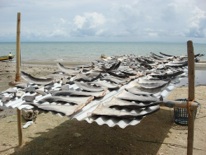
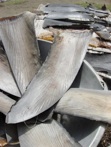








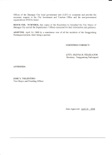
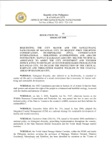
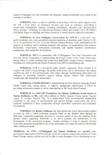
Figure 1: Batangas City Ordinance Resolution 9S, Series 2008 protecting thresher sharks from fisheries and their critical habitat from destruction in coastal areas falling under the jurisdictional auspices of the city government.
raising public awareness
The Group, in collaboration with Conservation International, OceanNEnvironment, University of Batangas and the Batangas City Tourism Authority, launched an extensive public awareness campaign to disseminate thresher shark biology, life history and vulnerability to scientists, government officials, concerned stake-holders and members of the press at various conferences, workshops and forums. Our efforts culminated in the publication of a controversial newspaper article in the Philippine Daily Inquirer (figure 2) and a comprehensive news documentary which aired on prime time TV (Probe TV: Pating). Our efforts were officially recognised in a letter of thanks from Secretary Jose L. Atienza, JR on behalf of the Republic of the Philippines (figure 3).

Figure 2: Philippine Daily Inquirer: Slaughter of Sharks Raises Alarm, A15, 10/04/08.
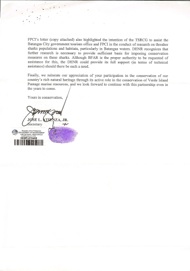
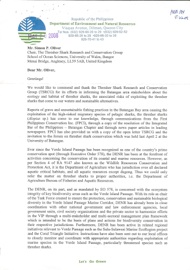
Figure 3: Letter of thanks from Secretary Jose L. Atienza, JR on behalf of the Philippine government.
© Simon P. Oliver, 2013






